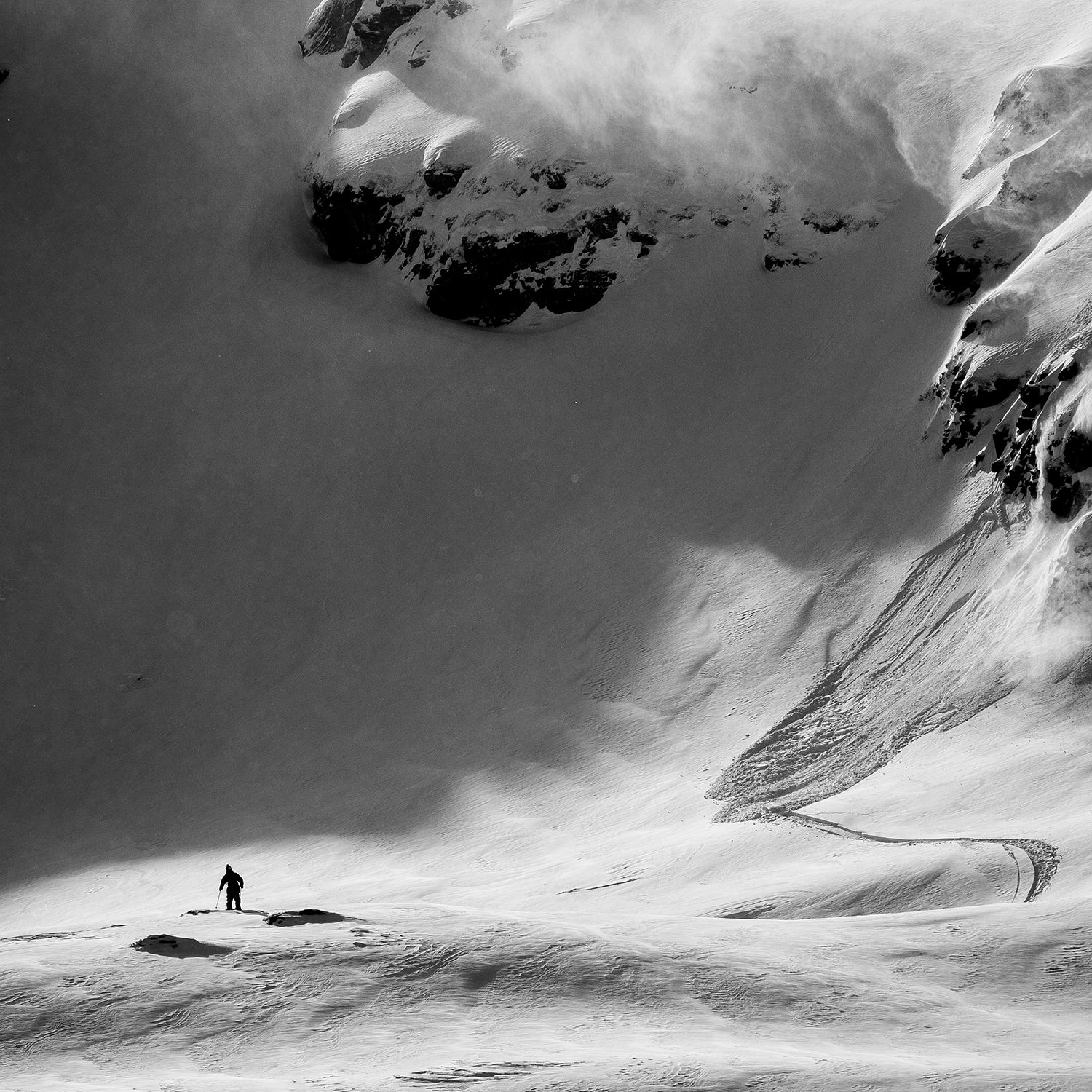On Saturday, skiing the fall line of Crystal Mountain’s Right Angle Trees in Washington’s Cascade Range, I made��turns without hitting��bottom��for the first time this season, and felt that perfect zero-G float of powder skiing. This past week has felt like a reprieve: snowy, cold, and deep. The winter I’ve been waiting for finally showed up.
But��of course, there was a bottom to the snowpack. And the better-late-than-never storms have had a real dark side. Like almost everyone who backcountry-skis, I’ve been spending a lot of the past few weeks thinking about the layers in this year’s skinny snowpack, and how snow, or the lack thereof, stacks up . Droughts between storms��suck moisture out of the snow. Hoarfrost layers form on the surface on cold, clear nights. Snowpack freezes and thaws. Heavy wet storms sit��on top of dry, slippery crystals. Those layers are a present danger, as we’ve seen in so many recent slides: have died in avalanches so far this season, more than any other period in the past .��
These sorts of volatile winter-weather cycles affect the future of our water supply, too.�� has shown how our skimpy powder days and warm winter rains carry down the chain into summer and fall and impact water use, drought, and even fire resiliency. Consistent weak winters like the ones we’ve been having in the West��make everything harder.
So while it’s easy to have FOMO looking at Instagram posts of Utah fluff and deep turns in Jackson, don’t forget that�� of Utah��and�� of��Wyoming are��still in��a drought and��trying to creep back��to . Even the big storm that slammed California last month to bring its moisture content up to where it needs to be. More than half the country is��, and at this point in the season, water managers say we’re looking at the difference between a dry year and a��.
You might imagine droughts as long periods without rain, but they��can also be caused by warm winters and a lack of water in the snowpack—referred to as��—in places that depend on mountain runoff for their water supply and storage. , led by assistant professor��, looked at snow-water equivalent (the amount of water contained in snowpack), precipitation, and temperature to quantify snow drought and track it globally. It found that from 1980 to 2018, the western U.S. experienced a 28 percent increase in the duration of its snow droughts, the in the world.
Warming is stressing our existing systems for water supply and delivery, and it’s going to get worse.
Scientists in recently scorched��California aren’t the only ones thinking about snow drought. A January paper from�� found that water storage is declining worldwide and could more than double its losses by the end of the century as a result��of a lack of precipitation and moisture. Warming is stressing our existing systems for water supply and delivery,��and it’s going to get worse.
So where do we go from here? The Colorado River is a good bellwether for drought management. It drains the Rockies, starting in Rocky Mountain National Park, and spreads across the arid southwestern corner of the country. It is so overused that it no longer flows into its delta in the Gulf of California. To try to address that stress, researchers at the��, based at Utah State University, just ��outlining future water-management plans for the Colorado River Basin. And their timing is good,��because this January marked the beginning of a five-year process to renegotiate the interim guidelines for managing the Colorado—a rare and important opportunity to recalibrate.
looks at looks at just how dry��the river has been during the beginning of the 21st century, how climatic factors like warming can suck a watershed dry, and how human decision-making��and overuse are��exacerbating the depletion. More than 80 percent of the river basin is in extreme drought. The major man-made storage reservoirs are�� and the planet’s natural storage—snowpack and soil moisture—are depleted, too.
So even if the Rockies do get a few more late-season storms��and the skiing stays good through the spring, the Colorado River Basin is in a hole that’s hard to get out of when it relies solely��on precipitation. Plus, in years like 2020, when the snowpack in the Rockies was decent, water levels were still low because summer monsoons were skimpy, and it was so dry and warm that the soil sucked up moisture. In Utah, according to the Utah Climate Center, soil moisture levels are about�� where they should be.
The Futures of the Colorado River Project concretely outlines how water managers, citizens, utilities, and states will have to be much more careful with water use in the future��if we want to maintain some level of equitable livability. “The risks of drought and climate change are both uncertain and potentially severe; however, our ability to control these futures is extremely limited compared to our ability to control the future demands for water,” the authors wrote.
In the summary, the paper’s authors say they want to��“encourage wide-ranging and innovative thinking about how to sustainably manage the water supply.” They advise cutting back river-basin use by�� in some places to account for diminished flows��and to match consumption with available supply. That will have to mean��reductions across the board, from municipal and industrial use to agriculture—the biggest user in the Colorado River Basin.
Just like skiing, our future water availability depends on when, where, and how moisture comes;��what we do with that information; and how conservative we choose to be. And yes, sometimes you get lucky. Maybe we’ll get a decade of wet winters after this. Maybe I’ll see another day like Saturday this season. But based on current conditions and past history,��we can’t bank on it. We can’t just get myopic and think about one storm.��We have to assume it’s going to continue to be bad��and change our behavior to adapt.


